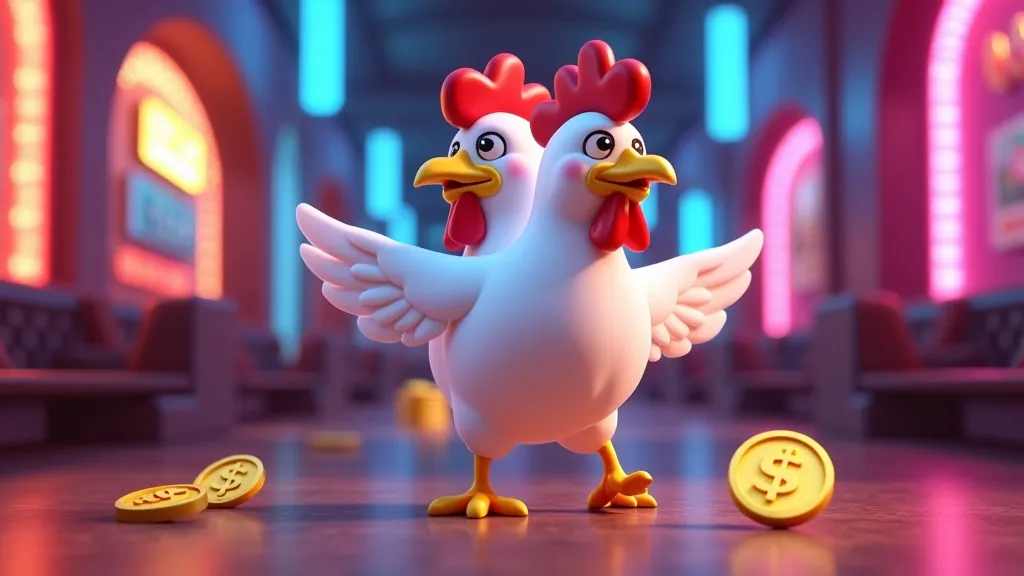Chicken Road Demo: Play Free, Learn Timing, Win Smart
If you want a fast, skill-forward crash game with zero financial risk,
you’re in the right place. This guide explains how the round works, when
to cash out, and how to practice without pressure. You’ll see the core
features, device tips, and a simple path from free practice to NGN
real-money play if you choose to go there later. Along the way, you’ll
also get one crisp strategy list, a clear step-through of the flow, and
an emoji table that sums up the experience at a glance.

What Is the Chicken Road Demo?
The chicken road demo is a free practice version of a crash-style arcade game where your multiplier climbs as a cartoon chicken dodges traffic. You choose when to lock in your result, so timing and composure matter more than luck. Because the demo uses virtual coins, you can explore the rhythm of rounds and learn safely. The chicken road demo game mirrors the paid build’s mechanics, so your practice translates cleanly. Think of it as a sandbox for testing instincts, not a slot you spin and forget.
How the Crash Mechanic Works
Each round begins with a calm moment to set your virtual stake, then the action spikes as the bird sprints forward and the multiplier rises. The longer you wait, the bigger the number—along with the chance of a sudden crash. There’s no guaranteed ceiling, which is why discipline beats greed in this mode. Manual cash-out gives you total control, while optional auto cash-out lets you predefine a target and take pressure off. Dual-bet support (when available) allows two simultaneous positions with different exits. Fast rounds keep the loop punchy, so you can iterate quickly on your timing. Leaderboards and live chat (where supported) add a light social layer without changing the core math. Most importantly, every session teaches you to read momentum and commit.
How to Play in Minutes
You don’t need prior crash-game experience; you just need a simple routine. Start with small virtual amounts to get a feel for the pacing and how soon crashes happen. The demo chicken road flow is built to minimize friction, so you can concentrate on exit timing. Because the chicken road game demo mirrors paid mechanics, every habit you build now will help later. Keep your focus on staying consistent rather than chasing giant multipliers every round.
From Bet to Cash Out: a Simple Path
First, understand the goal: secure your exit before impact, not after. Next, learn a repeatable sequence that you can follow even when the multiplier jumps fast.
-
Place a virtual stake and confirm your settings.
-
Watch the multiplier climb while you track your personal target.
-
If you use auto cash-out, set it before the run begins.
-
If you go manual, click cash-out the moment your target appears.
-
Log the outcome and move on—no tilt, no chasing.
After a few sessions, you’ll notice patterns in your own reactions more than in the graph. That’s the point: mastering yourself, then the game. Keep refining your targets until the flow feels calm and routine.
Betting, Timing, and Practice
Because this is a training environment, you can reset, experiment, and compare notes with yourself freely. The chicken road demo mode gives you endless reps with no financial stress, which is ideal for building consistency. Treat each run like a drill: set a target, execute, and review. The more you repeat clean exits, the easier it gets to ignore noise. Thanks to chicken road demo play free, you can spend all your focus on timing rather than outcomes.
Three Risk Styles You Can Test
Start with a clear intention for the next few rounds, then measure how you feel while executing. Pick one style, run it long enough to gather real signal, and only then adjust.
-
Low-risk: exit early and often to build discipline and a steady rhythm.
-
Hybrid: split positions or alternate targets to balance calm exits with occasional pushes.
-
High-risk: hold longer for rare big pops, accepting frequent busts as the trade-off.
After a handful of sessions, review which style keeps you composed. If you feel rushed or greedy, lower the target until your decision feels easy. When in doubt, lock in small wins and treat every clean exit like a rep in the gym. The skill is timing, not prediction, so train the part you control.
Features and Feel
The moment-to-moment experience is built around snappy rounds, readable UI, and punchy sound effects. With chicken road play demo, you get instant access in the browser—no downloads, no hassle. Because it’s chicken road free, pacing your own learning is effortless: play five quick rounds, step away, then return fresh. Visuals are bright and readable, and controls respond instantly. The result is a loop that’s easy to learn and surprisingly sticky.
Feature Snapshot
Below is a quick, at-a-glance view of what you interact with in every session. Use it to decide which settings and cues you want to lean on while practicing.
| Aspect | What you get |
|---|---|
| Round flow | Short bursts ⏱️ with smooth restarts 🔁 |
| Controls | Manual cash-out 🕹️ or preset auto exit 🎯 |
| Visuals | Clean cartoon motion 🎨 that keeps focus sharp 👀 |
| Audio | Traffic build-ups 🔊 and satisfying win cues 🎉 |
| Social | Leaderboards 🏆 and optional chat 💬 for light competition |
| Learning | Fast repetitions 📚 that reinforce timing ✅ |
These elements make it easy to iterate quickly without fatigue. If you prefer calmer sessions, set an auto exit and let the system secure your target. If you enjoy manual control, practice clicking exactly at your number and ignoring the next tick. Either way, you get immediate feedback that tightens your instincts round by round.
Demo vs Real-Money Play
The chicken road casino demo exists so you can learn the exact mechanics in a zero-risk setting. When you move to paid play, it’s the same rhythm and the same exit logic—only the stakes change. In real-money versions, balances, stakes, and payouts are typically handled in NGN. The chicken road casino game demo helps you test targets, nerves, and routines before any NGN is involved. By the time you switch, your timing feels natural rather than lucky.
Why Start with the Demo
Practicing free first lets you separate emotion from execution. You’ll find a target that feels calm, set an auto exit that matches it, and prove to yourself that consistency beats impulse. When NGN is at stake, this routine keeps you steady through dry spells and prevents tilt. Because the rules are identical, you’re not re-learning—just applying the same muscle memory. That continuity is what turns “I hope” into “I know what I’m doing.” If you ever feel rushed in paid play, return to free practice to reset. Treat it like a training ground you can visit anytime.
Devices and Performance
The demo runs smoothly in modern browsers on desktop and mobile, so you can practice wherever you are. Sessions load quickly, controls feel snappy, and the interface stays readable even on small screens. Thanks to chicken road free play, you can fit in short drills between tasks. And with chicken road demo free, you can experiment with different exit targets without worrying about balance management. The best device is the one that keeps you focused and relaxed.
Mobile or Desktop?
Mobile shines for quick reps: tap to exit, pocket the lesson, and carry on with your day. Touch input feels natural once you commit to a target and ignore the tick-by-tick temptation to wait “just one more second.” Desktop is great for longer sessions, especially if you like wider graphs and keyboard shortcuts where available. Larger screens make it easier to watch the multiplier climb without leaning in. If you swap between devices, keep your target consistent so your muscle memory stays intact. Stability in your plan matters more than the screen you use. Try both and notice where your decisions feel clearest; that’s your home base for training. When performance feels off, reduce distractions and shorten sessions until your exits are crisp again.
Sequels, Variants, and Skill Growth
From time to time you’ll see new twists or modes that remix the core
idea. A popular curiosity is the chicken road 2 demo, which keeps
the timing DNA but may introduce tweaks in pacing or presentation. Treat
any variant like a fresh drill: learn the cadence, set a conservative
target, and scale up only when your exits feel calm. The more versions
you try, the better you get at reading movement and committing to a
plan. That versatility pays off when you return to the classic loop.
What looks like luck from the outside is really practiced restraint.

FAQ
How do I decide on a good cash-out target?
Start with a number that feels almost too easy, then run several sessions at that exact target. If you rarely miss and stay relaxed, nudge it slightly higher and repeat. The goal is to find a level where you can act without hesitation. Once you own that number, your results become steadier and your head stays clear. Consistency beats chasing big spikes.
Does the demo really match the paid version?
Yes—the crash logic, pacing, and exit controls are the same, which is why training transfers directly. The key difference is that NGN applies only in paid play, while the demo uses virtual coins. Because the mechanics are identical, time spent practicing is never wasted. You build timing, not superstition. When you switch, you’re applying habits you’ve already tested.
Should I use manual or auto cash-out?
Use whichever keeps you calm. Auto exits remove panic and enforce discipline, which is great for training. Manual control can feel more engaging if you already have a steady target and quick reactions. Many players start with auto to build consistency, then mix in manual once their timing is reliable. If stress creeps in, go back to auto for a while.
What’s the best way to handle losing streaks?
Shorten your sessions and simplify your plan. Drop your target, lock in a few easy exits, and rebuild confidence. Avoid “one big hold” to make it all back; that’s emotion talking, not strategy. When you feel steady again, scale gradually. The aim is to protect decision quality, not to win every single round.
Can I practice advanced ideas like dual bets?
Absolutely—use free runs to try a conservative exit on one position and a longer hold on the other. This teaches you how it feels to lock in a base result while still giving yourself room to chase. Keep clear notes on which mix keeps you composed. If it adds stress, trim back to a single, simple target. Training is about control first, experimentation second.
